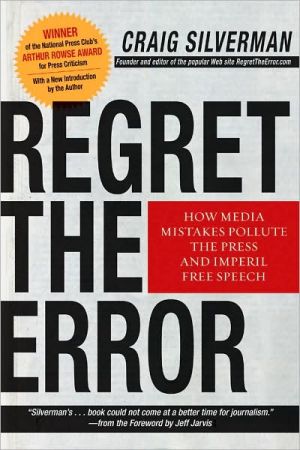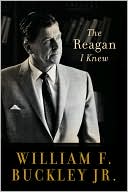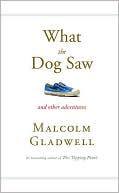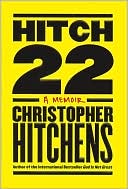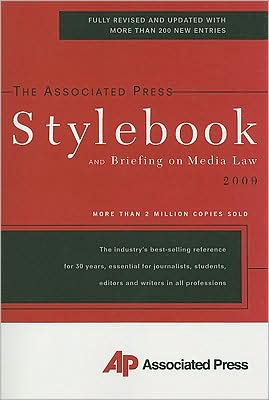Regret the Error: How Media Mistakes Pollute the Press and Imperil Free Speech
Winner of the National Press Club’s Arthur Rowse Award for Press Criticism!\ From Craig Silverman, proprietor of www.RegretTheError.com, comes a lively journey through the history of media mistakes via a chronicle of funny, shocking, and often disturbing journalistic slip-ups. The errors—running the gamut from hilarious to tragic—include “Fuzzy Numbers” (when numbers and math undermine reporting) “Obiticide” (printing the obituary of a living person), and “Unintended Consequences” (typos and...
Search in google:
We regret the error: it’s a phrase that appears in newspapers almost daily, the standard notice that something went terribly wrong in the reporting, editing, or printing of an article. From Craig Silverman, the proprietor of www.RegretTheError.com, one of the Internet’s most popular media-related websites, comes a collection of funny, shocking, and sometimes disturbing journalistic slip-ups and corrections. On display are all types of media inaccuracy—from “fuzzy math” to “obiticide” (printing the obituary of a person very much alive and well) to complete and utter ethical lapses. While some of the errors can be laugh-out-loud funny, the book contains a sobering journey through the history of media mistakes (including the outrageous hoaxes that dominated newspapers during the circulation wars of the 19th-century) and a serious muckraking investigation of contemporary journalism’s lack of accountability to the public. It shines a spotlight on the media’s carelessness and the sometimes tragic and calamitous consequences of weak or non-existent fact checking. Publishers Weekly Blogger Silverman is a man obsessed with pointing out the mistakes of others, though he dreams of a world in which he didn't have to. If media outlets printed their own corrections more thoroughly, amending online content appropriately, embracing their mistakes wholeheartedly, he argues, he wouldn't have to collect and publicize them with such devotion. Having founded regrettheerror.com to tally inaccuracies and corrections in the press, Silverman has set out to chronicle and categorize these errors in his first book. The result is a winding journey through the most glaring, damaging and humorous typos, misprints, misidentifications, "fuzzy numbers" and "obiticides" in the history of journalism, from the accidental to the malicious. These chapters are chock-full of amusing historical anecdotes, including the story behind the incorrect headline "Dewey Defeats Truman," the case of mistaken identity that galvanized Nobel to create his prestigious awards, and the oft-presumed dead but still living Abe Vigoda. Silverman injects plenty of humor, but mostly he is deeply concerned about the science of journalism, and at the heart of this romp is an argument for increased public participation in the news cycle. (Nov.)Copyright 2007 Reed Business Information
Introduction to the Paperback Edition xiForeword xxvIntroduction 1Statement of Accuracy 13Chapter 1 A Brief History of Media Accuracy and Errors 15Oral News 18Written News 18Birth of the Newspaper: The Seventeenth-Century Press 21The Eighteenth Century and the Fourth Estate 25The Nineteenth Century: From Excess and Error to Responsibility 28Chapter 2 Mass Media: Born of a Big Lie 30Hearst, Pulitzer, and Sulzberger: A Battle for the Soul of Journalism 39The Twentieth Century: Accuracy as Code 45Chapter 3 Regrets, More Than a Few 49"Dewey Defeats Truman" 49A Theory of Error 54Chapter 4 The Truth About Media Errors 65Print Media Errors 65Broadcast Errors 70Uncorrected Errors 76The Necessity of Error (No, really) 82The Corrections: Multiple Offenses 87Chapter 5 Common Errors 91Names and Titles 93The Corrections: Names and Titles 98Typos 102The Corrections: Typos 107Numbers 117The Corrections: Fuzzy Numbers 128Chapter 6 Unreliable Sources and Malicious Reporters 138Unreliable Sources 139Malicious Reporters 149The Lesson Not Learned 162Chapter 7 Obiticide: Death by Media 166Planned Obiticide 175Obiticide and the Average Citizen 179The Corrections 181Chapter 8 Mistakes and the Mistaken 186The Mobster and the Clown 188The Terrorist 194Doctors, Lawyers, and the Accused 197Tainted Images 200The Corrections 203Misidentifications and Personal Errors 203Photo Misidentifications 208Chapter 9 Errors Heard Round the World 213The Twenty-Four-Hour Broken Telephone 216Too Incredible Not to Report 219Chapter 10 The Trouble withCorrections 225Corrections: A Brief History 227Birth of the Modern Correction 229Online Corrections 233Broadcast Corrections 235The Failure of Corrections 237The Art of Correction 243The Corrections: Strange and Sublime 249So Sorry: Remarkable Apologies 258Chapter 11 The Disappearance of Newspaper Proofreading 265"Farewell, Etaoin Shrdlu" 266The Demise of Newspaper Proofreaders 268Chapter 12 The Birth (and Slow Death) of Magazine Fact Checking 275Anatomy of the Checker 279Everybody Has a System 284Death by a Thousand Cuts 286Chapter 13 Watching the Detectives: The Rise of External Fact Checking 293Distributed Fact Checking: RatherGate 296Media-Monitoring Organizations 305Chapter 14 The Big Newspaper in the Sky 310Accuracy Training 313Ombudsmen as Error Trackers 315Instant Source Surveys 316The Corrections 317Updates and Mistakes 317Online Corrections 318Fact Checking and Plagiarism Detection 321Embracing the Lighter Side of Accuracy 323For Readers 326How to Request a Correction 326Ensuring Accuracy When Interviewed 328The Way Forward 328Afterword 332Acknowledgments 336Notes 338Index 358Error Report Form 368
\ Publishers WeeklyBlogger Silverman is a man obsessed with pointing out the mistakes of others, though he dreams of a world in which he didn't have to. If media outlets printed their own corrections more thoroughly, amending online content appropriately, embracing their mistakes wholeheartedly, he argues, he wouldn't have to collect and publicize them with such devotion. Having founded regrettheerror.com to tally inaccuracies and corrections in the press, Silverman has set out to chronicle and categorize these errors in his first book. The result is a winding journey through the most glaring, damaging and humorous typos, misprints, misidentifications, "fuzzy numbers" and "obiticides" in the history of journalism, from the accidental to the malicious. These chapters are chock-full of amusing historical anecdotes, including the story behind the incorrect headline "Dewey Defeats Truman," the case of mistaken identity that galvanized Nobel to create his prestigious awards, and the oft-presumed dead but still living Abe Vigoda. Silverman injects plenty of humor, but mostly he is deeply concerned about the science of journalism, and at the heart of this romp is an argument for increased public participation in the news cycle. (Nov.)\ Copyright 2007 Reed Business Information\ \
